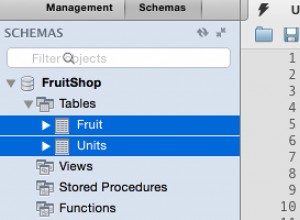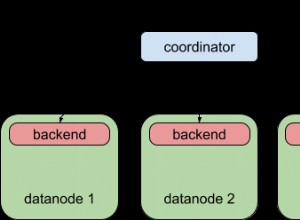Se você estiver usando o PostgreSQL 9.5 ou posterior, você pode executar o UPSERT usando uma tabela temporária e um
INSERT ... ON CONFLICT demonstração:import sqlalchemy as sa
# …
with engine.begin() as conn:
# step 0.0 - create test environment
conn.execute(sa.text("DROP TABLE IF EXISTS main_table"))
conn.execute(
sa.text(
"CREATE TABLE main_table (id int primary key, txt varchar(50))"
)
)
conn.execute(
sa.text(
"INSERT INTO main_table (id, txt) VALUES (1, 'row 1 old text')"
)
)
# step 0.1 - create DataFrame to UPSERT
df = pd.DataFrame(
[(2, "new row 2 text"), (1, "row 1 new text")], columns=["id", "txt"]
)
# step 1 - create temporary table and upload DataFrame
conn.execute(
sa.text(
"CREATE TEMPORARY TABLE temp_table (id int primary key, txt varchar(50))"
)
)
df.to_sql("temp_table", conn, index=False, if_exists="append")
# step 2 - merge temp_table into main_table
conn.execute(
sa.text("""\
INSERT INTO main_table (id, txt)
SELECT id, txt FROM temp_table
ON CONFLICT (id) DO
UPDATE SET txt = EXCLUDED.txt
"""
)
)
# step 3 - confirm results
result = conn.execute(sa.text("SELECT * FROM main_table ORDER BY id")).fetchall()
print(result) # [(1, 'row 1 new text'), (2, 'new row 2 text')]




